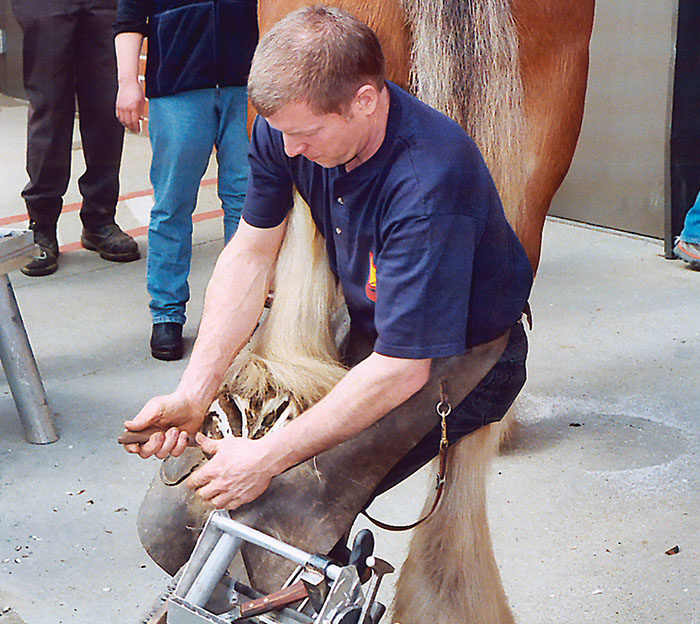American Farriers Journal
American Farriers Journal is the “hands-on” magazine for professional farriers, equine veterinarians and horse care product and service buyers.

DRAFT HORSE ENTHUSIASTS. Mike Wildenstein, resident farrier at Cornell University, works on the foot of a Clydesdale at a draft-horse shoeing educational seminar at the Tufts University School of Veterinary Medicine in North Grafton, Mass. Wildenstein uses his own draft horses in the woods and swamps around his New York home.
Mike Wildenstein says that one of the key things in trimming and shoeing a draft or heavy horse’s foot is to remember what’s above it.
“The basic anatomy of the hoof in the heavy horse is the same as in a light horse,” he says. “The difference is what is above the hooves.”
That would be anywhere from several hundred to more than a thousand extra pounds of animal. Wildenstein, a draft horse enthusiast and owner, says the size and the weight of the draft horse will have a negative effect on the hooves. He stresses that the working draft horse needs to be retrimmed and reshod every 6 weeks.
Wildenstein, a certified journeyman farrier and a fellow of the Worshipful Company Of Farriers Of Great Britain, is the staff farrier at Cornell University in Ithaca, N.Y. He says an evaluation is the place to start shoeing any draft horse. That includes making yourself aware of the horse’s conformation, looking at the hooves for flares, then picking up the foot just to look at it. He also moves the foot forward while he’s holding it, seeing how the fetlock and other portions of the leg interact with it.
…